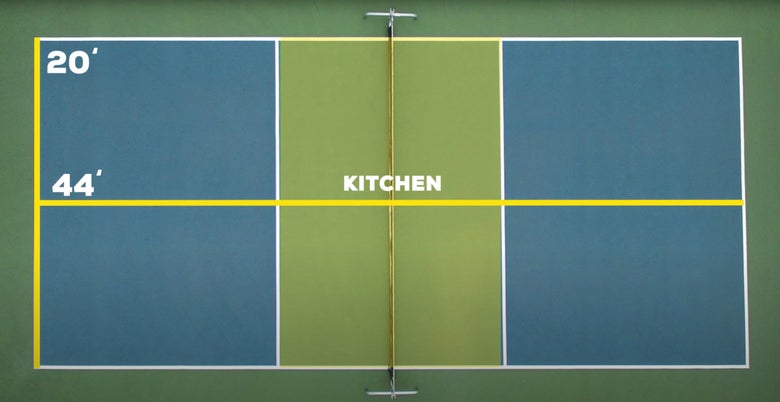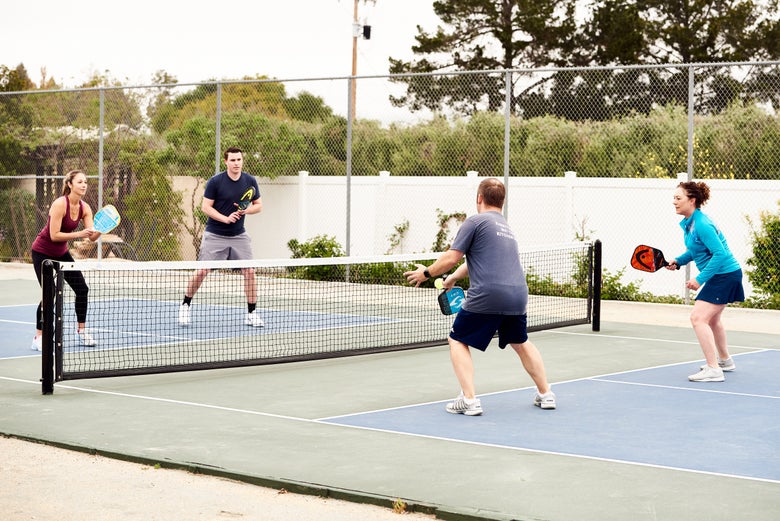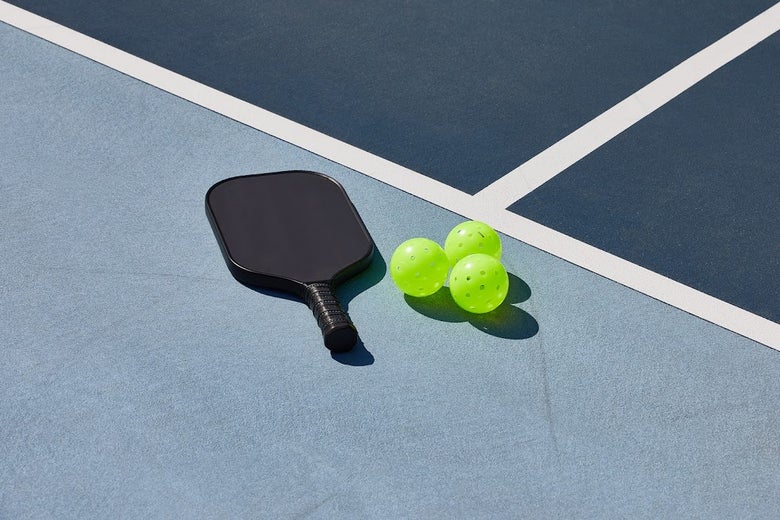How To Play Pickleball
Have you found yourself asking, "What is Pickleball?" and "How Do I Play?" This guide will help get you started with the basics of the game, the gear needed and where to find a court for your first pickleball session.
Pickleball is played on a 44’ x 20’ court, with a 36” net and features a non-volley zone often referred to as “The Kitchen.” It is played with a paddle and a plastic ball with holes (similar to but not a wiffle ball) and combines some of the best aspects of multiple sports.
Similar to tennis, when playing pickleball you can play either singles or doubles. Doubles tends to be the most popular in a recreational setting since it offers a fun, fast-paced game that’s social and easy for people of all ages and athletic abilities to pick up. To learn more about the origins of pickleball, check out our article: The History of Pickleball
Pickleball Rules
Two-Bounce Rule
The start of a game incorporates what is called the “Two Bounce Rule.” The serving team serves the ball cross-court to the returning team. The serve must land past the kitchen in the box diagonal from the server to be a valid serve. As of 2021, serves that clip the net and land past the kitchen line are valid serves. However, any serve that lands within the kitchen or on the kitchen line is a fault.
The returning team returns the serve off of a bounce (bounce 1) and now the serving team also has to let the return of serve bounce before hitting it (bounce 2). From there, play is open, meaning everyone is now allowed to take balls out of the air — with one catch (see below).
Non-Volley Zone
You can only take balls out of the air when you are standing outside of the Non-Volley Zone or what’s commonly called “the kitchen.” If you hit the ball out of the air while in the kitchen or standing on the kitchen line, you lose the point. If the ball bounces inside of the kitchen, you can move into the kitchen to hit the ball off of a bounce, just be sure you reset your positioning and get yourself out of the kitchen before going for the out of the air smash.
Scoring
Scoring is called out in a 3-number sequence that involves the server’s score, the returner’s score and whether server 1 or 2 is serving. For example, if the server calls out a score of 2-1-1, that means their team has two points, the returning team has one point, and they are the first server.
In pickleball, you only score points when serving. When starting a new game, the initial serving team only gets one server to balance out the advantage of serving first. Since the person playing on the right side of the court is always the first server of a sequence, they are the only one who serves during the first serving sequence of the game. The score at the start of the game is therefore called out as 0-0-2, indicating the 2nd server. (sometimes called out as 0-0-start). When the initial serving team loses the point it’s a side out, and the opposing team serves. From this point on, it switches to two servers per side (each player serving, always starting with the player on the right side of the court) before it’s a side out. So, after the first side out of a game, the opposing team now starts the score as server one, and when they lose a point it goes to its server two. When they lose a point on server two’s serve, it’s a side out, and the serve goes back to the other team. Games are typically played to 11 or 15, win by two.
What do I need to start playing pickleball?
Now that you know the basics, let's get you set up for all you need for your first session on court.
Pickleball Paddle
The game is played with a paddle made specifically for the sport of pickleball. Pickleball paddles come in a variety of shapes, weights and material compositions. With so many options out there, it can be confusing to know how to select your first paddle. Our article on How to Choose a Pickleball Paddle will help guide you through the process of finding the paddle that's right for you.
Pickleballs
Once determining whether you'll be playing indoors or outdoors, you'll want to stock up on court specific balls. While indoor and outdoor pickleballs look very similar, they do have some minor differences. Indoor pickleballs have larger and fewer holes than their outdoor counterparts and tend to be softer and lighter. Outdoor pickleballs have more, but smaller holes and tend to be firmer and heavier in order to maintain a consistent flight path in outdoor conditions.
Pickleball Shoes
In order to have the best playing experience and to prevent injury, pickleball players wear a court specific shoe. As with pickleballs there are outdoor specific shoes and indoor specific shoes. To learn more about the differences and for further assistance in finding the right pair of shoes for you, check out our article on How To Choose Your Next Pickleball Shoes.
Apparel
You'll want to wear athletic apparel on court to optimize mobility and to stay cool on court as the games heat up! You'll see a variety of styles on court from training gear, to tennis apparel, to pickleball-themed apparel. Below you can browse apparel options to see what best suits your style and preferences.
Where can I play pickleball?
Now that you're all geared up, let's figure out where you can go to play your first game.
More and more communities are building pickleball specific courts at local parks and offer open play sessions, lessons or league play. In some instances, you'll find parks have painted lines on tennis courts so you can play pickleball using the tennis courts when they aren't being used for tennis. For information on indoor play, check with your local community centers as many have designated hours where they offer pickleball sessions.
Another option for getting a taste of the sport is to set up your own court using a portable net. These nets are great for use on a tennis court, at the gym, vacant parking lot — wherever you can find some open space. There are also portable court lines you can use for setting up the parameters of the court. If you can't find enough room for a full-sized court, there are smaller nets that are easy to set up in a driveway or garage space, providing a great avenue for practicing your dink.



